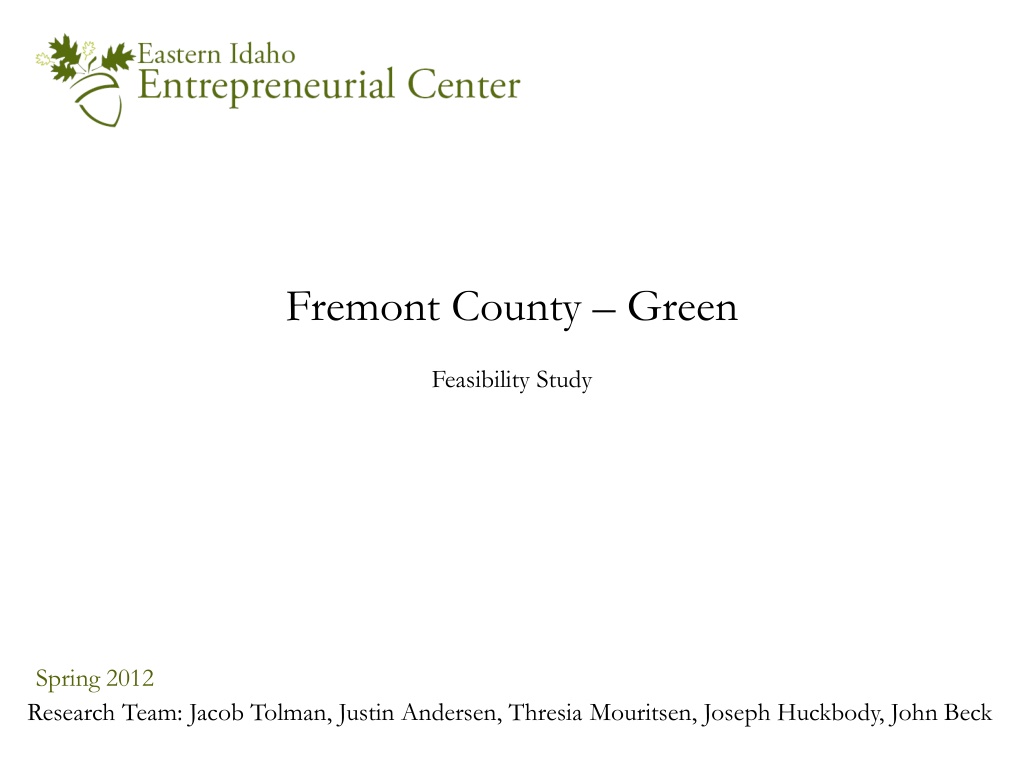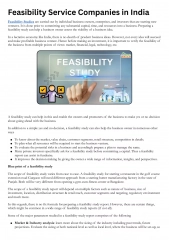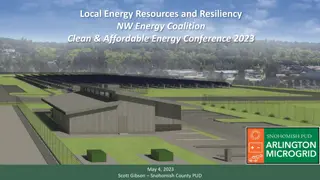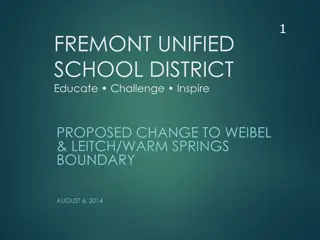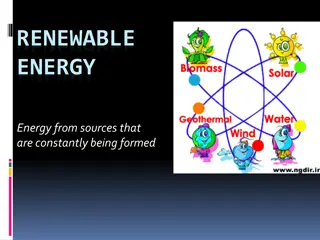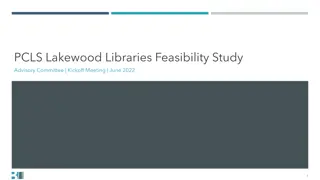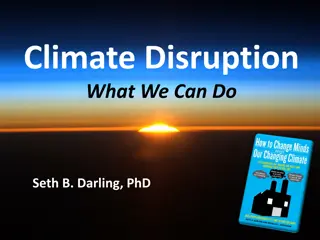Energy Sources and Feasibility Study in Fremont County
Explore the feasibility of various energy sources in Fremont County, including biomass, natural gas, wind, and tax incentives. The study delves into the pros and cons of each energy source, tax benefits, and the potential for green energy initiatives. It covers details on biomass cost, facility expenses, energy production, and existing infrastructure for natural gas. Considerations like technology simplicity, pollution levels, subsidies, job creation, and energy efficiency are highlighted.
Download Presentation

Please find below an Image/Link to download the presentation.
The content on the website is provided AS IS for your information and personal use only. It may not be sold, licensed, or shared on other websites without obtaining consent from the author.If you encounter any issues during the download, it is possible that the publisher has removed the file from their server.
You are allowed to download the files provided on this website for personal or commercial use, subject to the condition that they are used lawfully. All files are the property of their respective owners.
The content on the website is provided AS IS for your information and personal use only. It may not be sold, licensed, or shared on other websites without obtaining consent from the author.
E N D
Presentation Transcript
Fremont County Green Feasibility Study Spring 2012 Research Team: Jacob Tolman, Justin Andersen, Thresia Mouritsen, Joseph Huckbody, John Beck
Tax Incentives Energy source: Utility & Commercial Large Wind Small Wind Open-loop Biomass Facility Geothermal Geothermal Heat Pumps Solar Expiration: Benefit: Jan 1, 2013 Jan 1, 2017 Jan 1, 2014 Jan 1, 2014 Jan 1, 2017 Jan 1, 2017 30% grant refund 30% grant refund 30% grant refund 30% grant refund 10% grant refund 30% grant refund Residential Solar, Biomass, Wind, & Geothermal Jan 1, 2017 Income tax deduction of 40% year one, 20% years 2-4. Limit $5K per year and $20K total.
Biomass Boise County biomass case study: 10-13 cents kWh Biomass cost: $30-45 bdt Facility cost: 15.4 Million for a 3MW facility Current biomass available in Fremont County: 8,732 tons at $30 per bdt 1 MW uses 7,500 9,000 bdt annually Viable at $3.32 bdt (without subsidies) Heavy subsidies
Biomass Pros Cons Simple technology Pollution is high Utilizes waste Turn around is long Creates jobs Heavy subsidies Can be constructed any place Biomass transportation creates a close to biomass financial burden
Natural Gas Designs Combined Cycle 60% thermal efficiency More expensive, less flexible Simple Cycle 15-42% thermal efficiency Flexible (Gas engines come in almost all sizes) Common Project Design Phase 1: Simple Cycle Phase 2: Convert Simple Cycle -> Combined cycle
Natural Gas Pros Cheap fuel Opens doors for other Green energy initiatives (natural gas cars) Existing infrastructure High energy production Cons Natural gas prices move a lot Carbon footprint is higher than alternative green energies. Upfront costs are high GE turbines are in demand Water sterilization issues
Wind Large wind Energy production up to 2.7 MW per windmill Wind is free 97-98% operating availability year round Farmers & ranchers get 3% land rent Cosmetic concerns Efficiency at 15% Large and small land requirements Wind patterns & geography do not match Costs are high & tax incentives are set to expire Source: General Electric Account Manager Dan Fesenmeyer
Wind Small Wind Grid-tied systems for net metering Energy production: from batteries to businesses Lower investment costs Near 20% efficiency Lower cut-in rates more viable for the area Tax incentives last longer Cosmetic concerns erased
Wind Cut-in Speed m/s (mph) 3.5 (7.83) 3.5 (7.83) 3.4 (7.5) 3.5 (7.83) 2 (4.5) 3.0 (6.71) 3.5 (7.83) Cut-out Speed m/s (mph) 25 (55.92) 25 (55.92) 60 (134) 25 (55.92) 60 (134) 30 (67.1) 63 (140) Rated Speed m/s (mph) 11.5 (25.72) 11.5 (25.72) 12 (27) 10 (22.37) 11 (24.6) 10 (22.37) 13 (29) Tower Height 80-100 m 80-120 m 80-100 m 80-120 m 18-49 m 24 m 18-49 m 16 m 10-21 m Rotor Diameter Company General Electric General Electric Bergey WindPower Aeolos (UK) Bergey WindPower Hengfeng (China) Southwest Windpower Skystream 3.7 Residential Model GE 1.X GE 2.X 10 kW Excel 20 KW 5 kW Excel HF-15KW Purpose Utility Utility Residential Residential Residential Residential Cost/unit $1.8-$2.2 M 1.25-1.75 MW $3.2 M $42-$68 K $36-$40 K $32-$58 K $16-$30 K $12-$15 K Energy output 2.5-2.75 MW 10 kW 20 kW 6.2 kW 15 kW 2.4 kW 7 m 9 m 6.2 m 2 m 3.72 m Pros: - Wind is free - Multiple vendors - Residential tax incentives Cons: - Dependent on wind patterns - Prices are high - Aesthetics
Solar Two types: PV and CSP Minimal real estate requirements Lowest cost of energies researched Payback period: 3-5 years Tax benefits till 2017 Efficiencies range from 5% to 42% (http://www.eere.energy.gov/basics/renewable_energy/pv_systems.html)
Solar Monthly Energy Output (kWh) 2,604.0 Number of Panels 1 2 3 4 8 10 20 30 40 80 Mounting Racks Included Included Included Included $600 $750 $1,500 $2,250 $3,000 $6,000 Company AUO AUO AUO AUO SolarEdge SolarEdge SolarEdge Solar Sky Solar Sky Solar Sky Cost $ $ $ $ $ $ $ $ $ $ 1,325 2,160 2,740 3,625 4,757 5,515 9,304 13,065 17,065 34,125 33.6 67.0 100.8 134.5 256.8 320.0 620.0 976.5 1,302.0 Pros: - Sunlight is free - Tax incentive period - Low cost - Short payback period - Low maintenance Cons: - Cold climate - Low average efficiency - Zero permanent job creation
Micro Hydro 197 potential locations Initial investment cost: $10,000 - $30,000 Payback period: 5 24 years Yearly maintenance cost 1.5% - 2.5% No ecological impact State-level permits Energy prices: 5.1 11.3 cents per kWh
Micro Hydro Pros Cons Many possible locations Low power output Inexpensive installation Rural location of sites Low maintenance costs Little job creation Steady flow of natural resource Environmentally friendly
Geothermal Newdale, Fremont County, Idaho Temperatures point to a binary cycle system Costs per kWh: 6 to 8 cents per kWh Tax incentive for plants placed in service by December 31, 2013: amount of 2.2 /kWh. Total investment approximately $13 million to build 3 to 5 production wells in the Newdale location. The Department of Energy estimates costs around $2500 per installed kW.
Geothermal Virtually no pollutants, low steam point liquid, & zero emissions Availability & efficiency Versatility: homes and/or businesses Job creation: about 1.7 permanent jobs per megawatt (MW) of capacity installed. Side effects: greenhouses, mineral revenue, long-term energy supply and job creation Up front costs Payback: 10-20 years
Geothermal Pros Cons Geothermal resources are available in the area for energy production. Job creation There are multiple available uses for the resource (greenhouse/direct application for heating homes and businesses) Low, dependable cost of energy Zero emissions from Binary power plant High upfront costs There are some documented effects of opening an underground reservoir (micro quakes, ground sinkage) Long payback period Much of the known Newdale area land with geothermal capabilities is privately owned.
Recommendations Environmental? Impact low low low low high medium high Energy? Source Initial? Investment Payback? period Energy? production $? cost? per? kWh Solar 1-35K 3-5? years Small? wind 12-68K 10-15? years Geothermal 13k 10-20? years Micro? Hydro 1K-15K 10? years Natural? gas 85-210M unknown Big? wind 2.4-3.2M 15-20? years Biomass 15.4M Huge Job? Creation 33-2,600? kWh 100? kWh 3,000-5,000? KW <100kWh 40-120? MW 1.5-2.7MW 3MW $0.05 $0.13 0 0 3 2 $0.05? -? $0.08 $0.08 varies $0.13 20 4 15 $0.10? -? $0.12 cheap and viable. Micro hydro depends on remoteness from grid connection. Individual sites need assessment. Natural gas can threaten the environment, but energy production is the highest. Big wind does not have required geography and wind patterns. Biomass requires heavy subsidies. Long-term fuel source is unreliable. Residential solar & small wind are ready for on-grid installation. Geothermal requires additional testing to pinpoint temperature and location, but is
